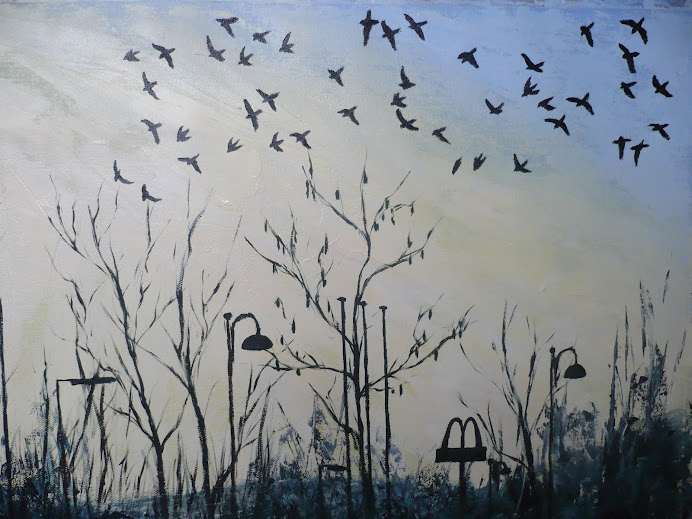
This photo kind of shows the neon glow that I was referring to in the previous post. I think this has something to do with the fact that there is such a difference between the midnight blue/black on the sides and the shimmering multi hued blue in the centre.
For some reason the posts are showing the photos as verticals instead of horizontals, which they are meant to be, but I have to admit that once I'd finished the painting and was storing it upright to dry I found just as much satisfaction out of viewing the painting vertically was as I did viewing it horizontally. It brings me back to the comments I was making about the work of Barnett Newman and the painting Uriel which has vertical zips but works for me as a valid image of the sea/sky/shore.
When I asked my husband for his interpretation of the painting he said it reminded him of the sea at night, and also the haze of atmosphere above the earth when viewed from space. I like the fact that it can be viewed in these different ways and is open to interpretation.
It also unexpectedly reminds me of the painting Untitled, 1917/1918 by Olga Rosanova, who I also saw in the Abstract Art book by Mel Gooding, and is shown in this link here,
For a project that could be viewed in quite a limited way I'm pleased with the outcome and the final image.


 This second photo shows the middle section after a few most swipes, and it's
This second photo shows the middle section after a few most swipes, and it's 

